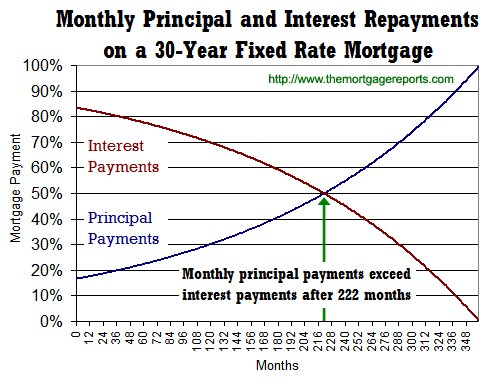The Financial Crisis Query Commission discovered that in 2008, GSE loans had timeshare owner a delinquency rate of 6. 2 percent, due to their conventional underwriting and certification requirements, compared with 28. 3 percent for non-GSE or private label loans, which do not have these requirements. Moreover, it is not likely that the GSEs' enduring inexpensive housing goals motivated loan providers to increase subprime loaning.
The objectives came from the Real estate and Community Development Act of 1992, which passed with overwhelming bipartisan assistance. In spite of the relatively broad required of the budget friendly housing goals, there is little evidence that directing credit toward borrowers from underserved communities triggered the real estate crisis. The program did not considerably change broad patterns of home mortgage loaning in underserviced communities, and it operated quite well for more than a years prior to the private market started to heavily market riskier home loan products.
As Wall Street's share of the securitization market grew in the mid-2000s, Fannie Mae and Freddie Mac's income dropped significantly. Figured out to keep shareholders from panicking, they filled their own financial investment portfolios with dangerous mortgage-backed securities purchased from Wall Street, which generated higher returns for their shareholders. In the years preceding the crisis, they also started to decrease credit quality requirements for the loans they purchased and guaranteed, as they tried to complete for market share with other personal market participants.
These loans were typically originated with large down payments but with little paperwork. While these Alt-A mortgages represented a small share of GSE-backed mortgagesabout 12 percentthey was accountable for between 40 percent and 50 percent of GSE credit losses throughout 2008 and 2009. These errors combined to drive the GSEs to near personal bankruptcy and landed them in conservatorship, where they stay todaynearly a decade later on.

And, as described above, overall, GSE backed loans performed much better than non-GSE loans during the crisis. The Community Reinvestment Act, or CRA, is designed to deal with the long history of prejudiced loaning and motivate banks to help meet the requirements of all borrowers in all sectors of their neighborhoods, especially low- and moderate-income populations.
What Are Interest Rates On Second Mortgages Can Be Fun For Everyone
The central concept of the CRA is to incentivize and support viable personal lending to underserved neighborhoods in order to promote homeownership and other neighborhood investments - how does bank know you have mutiple fha mortgages. The law has actually been amended a variety of times because its preliminary passage and has ended up being a cornerstone of federal neighborhood development policy. The CRA has actually facilitated more than $1.
Conservative critics have argued that the need to satisfy CRA requirements pushed loan providers to loosen their loaning standards leading up to the real estate crisis, effectively incentivizing the extension of credit to unjust customers and fueling an unsustainable real estate bubble. Yet, the proof does not support this narrative. From 2004 to 2007, banks covered by the CRA originated less than 36 percent of all subprime mortgages, as nonbank lending institutions were doing most subprime financing.
In overall, the Financial Crisis Questions Commission figured out that simply 6 percent of high-cost loans, a proxy for subprime loans to low-income debtors, had any connection with the CRA at all, far below a threshold that would indicate considerable causation in the real estate crisis. This is because non-CRA, nonbank lending institutions were frequently the offenders in a few of the most harmful subprime lending in the lead-up to the crisis.
This is in keeping with the act's reasonably restricted scope and its core function of promoting access to credit for certifying, traditionally underserved debtors. Gutting or removing the CRA for its expected function in the crisis would not only pursue the incorrect target however also held up efforts to reduce inequitable mortgage loaning.
Federal real estate policy promoting affordability, liquidity, and access is not some inexpedient experiment but rather a response to market failures that shattered the real estate market in the 1930s, and it has sustained high rates of homeownership ever since. With federal assistance, far greater numbers of Americans have actually taken pleasure in the benefits of homeownership than did under the free market environment before the Great Depression.
Fascination About How Does The Trump Tax Plan Affect Housing Mortgages
Instead of concentrating on the danger of government support for home mortgage markets, policymakers would be better served analyzing what many experts have actually determined were reasons for the crisispredatory lending and poor http://kameronvfqx652.yousher.com/the-facts-about-what-are-cpm-payments-with-regards-to-fixed-mortgages-rates-uncovered guideline of the monetary sector. Putting the blame on housing policy does not speak with the facts and risks reversing the clock to a time when most Americans could not even dream of owning a home.
Sarah Edelman is the Director of Housing Policy at the Center. The authors want to thank Julia Gordon and Barry Zigas for their helpful remarks. Any mistakes in this brief are the sole responsibility of the authors.
by Yuliya Demyanyk and Kent Cherny in Federal Reserve Bank of Cleveland Economic Trends, August 2009 As increasing home foreclosures and delinquencies continue to undermine a financial and financial healing, an increasing amount of attention is being paid to another corner of the residential timeshare florida or commercial property market: commercial genuine estate. This article discusses bank exposure to the industrial property market.
Gramlich in Federal Reserve Bank of Kansas City Economic Evaluation, September 2007 Booms and busts have actually played a prominent function in American economic history. In the 19th century, the United States took advantage of the canal boom, the railway boom, the minerals boom, and a monetary boom. The 20th century brought another financial boom, a postwar boom, and a dot-com boom (what are the interest rates on 30 year mortgages today).
by Jan Kregel in Levy Economics Institute Working Paper, April 2008 The paper offers a background to the forces that have produced today system of domestic housing financing, the factors for the current crisis in mortgage funding, and the impact of the crisis on the total monetary system (what are the interest rates on 30 year mortgages today). by Atif R.

What Are The Types Of Reverse Mortgages for Beginners
The recent sharp boost in home mortgage defaults is considerably magnified in subprime postal code, or postal code with a disproportionately big share of subprime customers as . which banks are best for poor credit mortgages... by Yuliya Demyanyk in Federal Reserve Bank of St. Louis Regional Economist, October 2008 One may expect to find a connection between debtors' FICO ratings and the occurrence of default and foreclosure throughout the existing crisis.
by Geetesh Bhardwaj and Rajdeep Sengupta in Federal Reserve Bank of St - what act loaned money to refinance mortgages. Louis Working Paper, October 2008 This paper demonstrates that the reason for prevalent default of home mortgages in the subprime market was an abrupt turnaround in the home price gratitude of the early 2000's. Utilizing loan-level information on subprime mortgages, we observe that the bulk of subprime loans were hybrid adjustable rate mortgages, developed to enforce considerable financial ...
Kocherlakota in Federal Reserve Bank of Minneapolis, April 2010 Speech before the Minnesota Chamber of Commerce by Souphala Chomsisengphet and Anthony Pennington-Cross in Federal Reserve Bank of St. Louis Evaluation, January 2006 This paper explains subprime loaning in the home mortgage market and how it has progressed through time. Subprime financing has actually introduced a substantial amount of risk-based pricing into the home loan market by creating a myriad of costs and item options mainly figured out by borrower credit rating (mortgage and rental payments, foreclosures and bankru ...